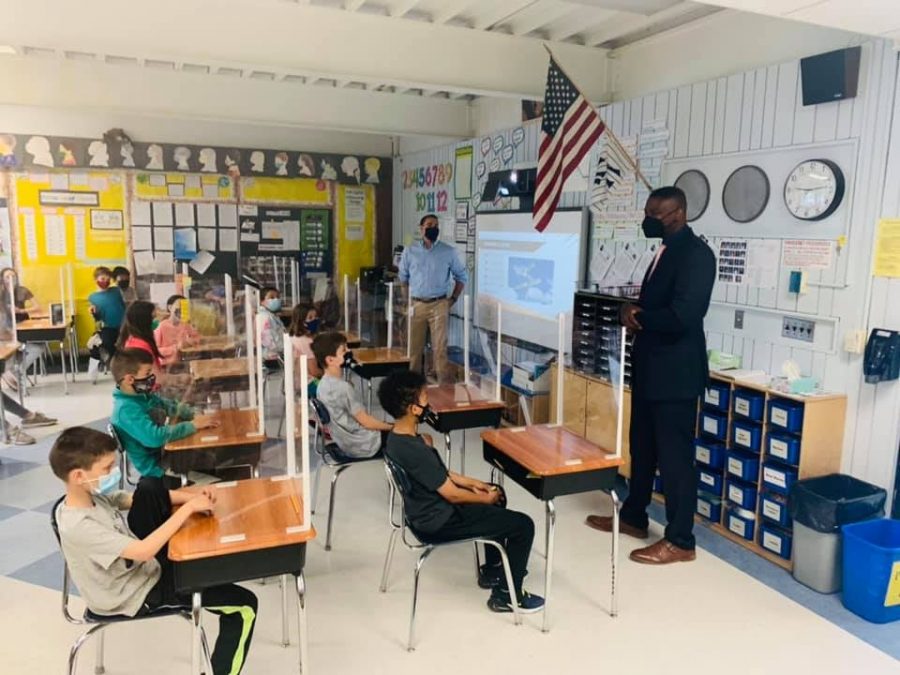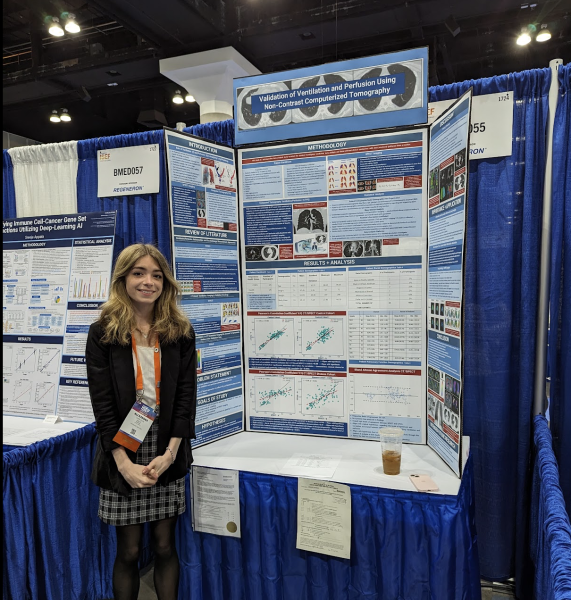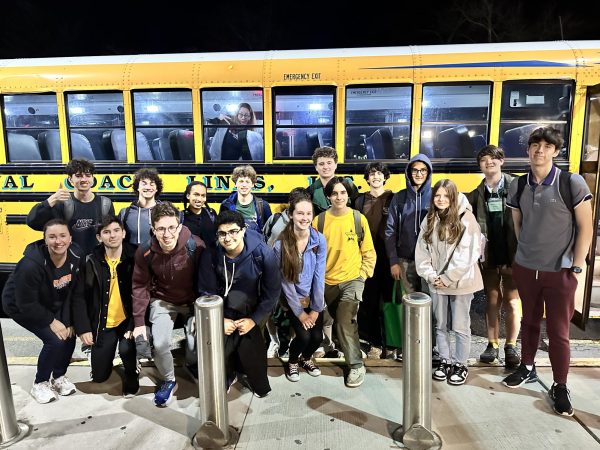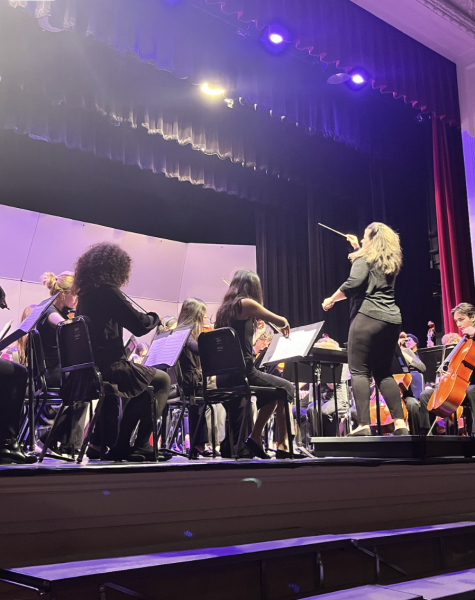Mamaroneck Moves to 50% Capacity
With a month of no cases, the MHS made the decision to increase capacity.
Photo Courtesy of @MamaroneckPublicSchools on Facebook
Mamaroneck students learning in an in-person setting.
November 11, 2020
At the beginning of October, Mamaroneck High School released its schedule detailing how the school would hold classes with 33% of students at any given time. On October 2, this release was updated to reflect the new 50% plan that was set up in the beginning of the year to be used later, if the coronavirus was still under control. The update notified parents that MHS would switch from 33% capacity to 50% capacity on Thursday, October 8. The Globe reached out to Ms. Clain, the principal, who had a major role in deciding if Mamaroneck High School should go to 50%.
Ms. Clain said “There were many factors involved” in the decision to switch to the 50 percent plan. She said that the school decided to go to 50% “after ensuring that the logistics (travel patterns) were working and that we could increase capacity. Students had dropped and added classes and class rosters are pretty stabilized.” Ms. Clain also stated that this would not have happened without the diligence of the students during this time. “They were absolutely serious about being in school and we have had almost no cases of students not wearing masks all the time while in school,” she said. She expressed that students have done a great job of following rules and not “hanging about”.
Mrs. Clain also explained how there were some kinks to work out with the layouts of classrooms because, although the school wanted to go 50%, safety and social distancing were still the first priority in all classrooms. “We walked through classrooms and looked at where and how teachers are teaching and how much space they need and want at the front of the classroom. We went into classrooms again and again (with a measuring tape) to determine if we could fit enough desks 6 feet apart for that particular class. We had to move a couple of teachers into larger classrooms, so that they could accommodate their 50% rosters.”
The school began the 50% capacity plan on a Thursday instead of a Monday for a few reasons. “By the end of the week of September 29, we were confident that we could get to 50%. Custodians had to move some desks and furniture to accommodate the 6 foot distancing. They need time to move the furniture. We also thought it would be easier to finish a cycle of days 1, 2 and 3 and then switch to the Day 1 Day 2 schedule.” The school decided to make the switch before a Focus Friday and a three-day weekend so it could work out problems with the systems while students were not in the school. “We [Ms. Clain and the Assistant Principals] wanted to see the 50% in action for one day, then see if we needed to make changes or tweak travel patterns etc. We had four days to do so.”
The school also considered the teachers when looking to increase capacity. “Teachers seemed to want to get to 50% but only if they felt safe. By maintaining the 6 foot guideline, and masks, which is above and beyond the state mandate, they seemed satisfied. Seeing students every other day will help build community and relationships much faster.”
Ms. Clain felt similarly about listening to the voices of students and parents. “Students and parents were making it clear that they wanted to get to 50%. On a daily basis students were asking me about 50% and parents were sending me emails.” However, some students are not on board with the move to 50%. Some seniors said that they “like the small school vibe with 33 percent” and that “if it [the 33% model] ain’t broke, don’t fix it.” But, to students who are skeptical over increasing capacity, Ms Clain says, “We are continuing to hold ourselves to a higher standard than required by the state, and we have maintained the 6ft guidelines in addition to wearing masks all the time.”
As for whether this model has been successful, Ms. Clain and her fellow administrators members have to wait and see and will be ready to adjust their approaches as circumstances change.


















